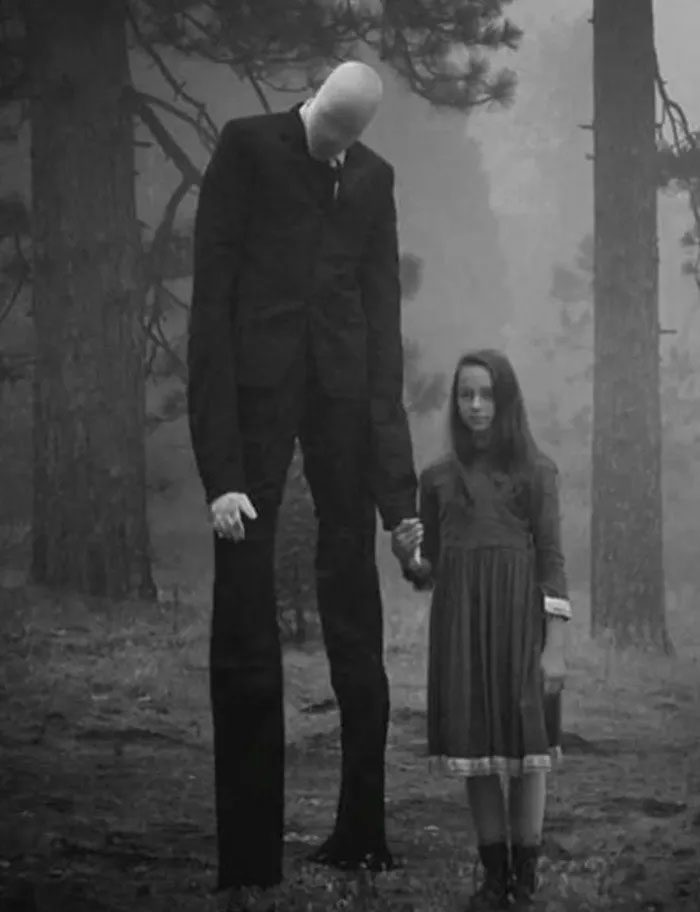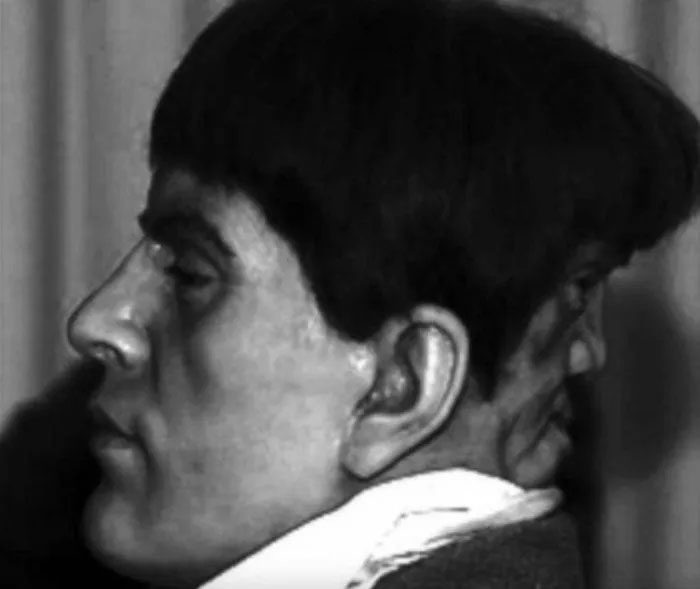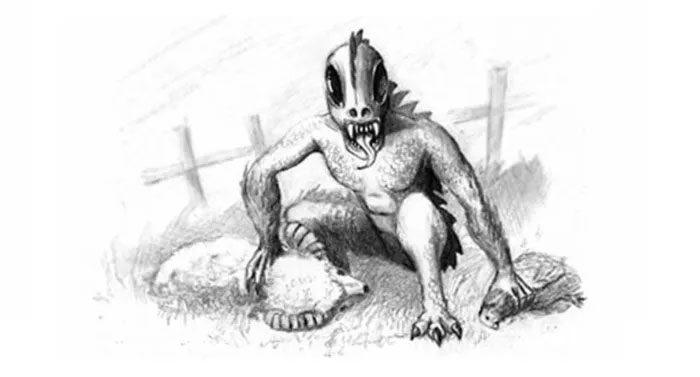The origins of some of the most terrifying urban legends sometimes stem from real events that have impacted reality.
“Urban legends” are stories, often with a horror theme, that are circulated in society and evolve over time. Although largely fictional and lacking authenticity, their widespread sharing has made them famous, captivating the curiosity of many. Behind some of the most popular urban legends, there are occasionally real events that have a significant effect on reality.
Slender Man – The Faceless Tall Man
Unlike other urban legends that have been passed down orally, Slender Man originated from a modified image on the internet. In June 2009, a website hosted a Photoshop contest, challenging users to take normal photographs and edit them with mysterious details to make them scarier. Inspired by two famous horror writers, H.P. Lovecraft and Stephen King, contestant Eric Knudsen designed a tall, thin, and bizarre character with a smooth face. Thus, Slender Man was born.

Slender Man, a fictional character that instills fear in many. (Image: The Sun).
Gradually, Eric Knudsen’s distinctive design gained popularity on the internet, leading to the creation of short films and ghost stories inspired by Slender Man. The eerie tale evolved to suggest that Slender Man would often lure children into the woods and command them to commit murder.
Initially just a story meant to scare without real harm, it unexpectedly escalated into a true horror. On May 30, 2014, two 12-year-old girls, Morgan Geyser and Anissa Weier, believed in this terrifying urban legend and lured a friend into the woods outside Milwaukee, Wisconsin, intending to kill her as a sacrifice to Slender Man. The victim, Payton Leutner (12 years old), was stabbed 19 times and left in the forest. Fortunately, Leutner survived and was discovered by passersby who called for emergency help when she managed to drag herself to a nearby road. A jury ruled that Anissa Weier was not criminally responsible due to a delusional disorder, while Morgan Geyser was sentenced to 40 years in prison.

Morgan Geyser pleads guilty in court on October 5, 2017. (Image: ATI).
Bloody Mary
Nearly every child growing up in the West is familiar with the terrifying urban legend of a woman known as Bloody Mary. The legend states that if you stand in a cramped closet or in front of a mirror in a dark bathroom and repeatedly say the name “Bloody Mary” three times (some accounts say thirteen times), you will summon the vengeful spirit of a woman—Queen Mary I of England.
The story originates from a true historical narrative involving Mary I, the first queen to officially ascend the throne of England. During her early years, Mary I lived in pain and isolation due to her father’s—King Henry VIII’s—lack of recognition. After her half-brother, Edward VI, who was the successor to their father, died, Mary seized the opportunity, leading an army into London in 1553 and successfully claiming the throne.
During her reign, she implemented a series of reforms but faced a backlash from the public, especially for her persecution of Protestants. Within just three years from 1555 to 1558, she ordered the execution of nearly 300 Protestants by burning. This is why she is referred to as “Bloody Mary.”
Mary I married Philip II of Spain, but was ultimately abandoned by him for failing to produce an heir, and she died at the age of 42. As a result, many later versions of the urban legend depict Bloody Mary in the mirror as a ghost holding a child or searching for her lost child.

Portrait of Queen Mary I of England. (Image: ATI).
Edward Mordrake – The Two-Faced Man
On December 8, 1895, a story published in the Boston Sunday Post titled “The Wonders of Modern Society” told of a man named Edward Mordrake who had a second face on the back of his head. This face would whisper “things that only people talk about in hell” to poor Mordrake at night and mock him whenever he cried.
Driven to madness by the face, Mordrake committed suicide at the age of 23. In his suicide note, he pleaded for the face to be destroyed, “lest it continue to whisper horrible things in my grave.” Later, two doctors, George M. Gould and Walter L. Pyle, included this story in their book “Anomalies and Curiosities of Medicine,” published in 1896.
Although conjoined faces are a real biological phenomenon, individuals born with a second face rarely live long, and no face possesses independent speech as there is only one brain. It wasn’t until 2015 that the Museum of Hoaxes (a website that discusses the authenticity of hoaxes or urban legends) discovered that the original article published in the Boston Sunday Post about Mordrake was actually the creation of a science fiction writer and that the story was entirely baseless. Furthermore, the article cited information from the Royal Society of Science, one of the primary sources in the article, while this organization does not exist.

Wax statue depicting Edward Mordrake. (Image: ATI).
The Blood-Sucking Goat Demon Chupacabra
The Chupacabra is a famous creature in Puerto Rican folklore, believed to prey on everything from chickens and sheep to rabbits and dogs. It is described as a terrifying creature resembling a kangaroo, with scaly skin, a spiky tail, sharp fangs, and blood-red eyes. While many are skeptical and consider the Chupacabra an urban legend, some believe that their farm animals have truly been attacked by this monster, with carcasses found drained of blood.
One of the earliest reported sightings of the Chupacabra occurred in the small town of Moca in 1975, where livestock were found drained of blood with only a few small puncture wounds in their chests.
Then, in 1995, a woman named Madelyne Tolentino living in Canóvanas, Puerto Rico, looked out her window and saw a bipedal creature jumping by; she also smelled a sulfur-like odor. Witnesses corroborated Madelyne Tolentino’s account and added that the creature they saw was hairless.
That same year, eight sheep were discovered dead, each with three puncture wounds in their chests and believed to be completely drained of blood. Reports indicated that up to 150 farm and pet animals were killed in this manner in the Tolentino area that year.
Sightings of the Chupacabra continue into modern times around the world. In October and December 2018, there were multiple reports of suspected Chupacabra attacks in Manipur, India. In October 2019, a man named Mundo Ovni claimed to have captured footage of a chicken attack in the Seburuquillo area of Lares, Puerto Rico.

Illustration of the blood-sucking goat demon Chupacabra. (Image: ATI).
American writer Benjamin Radford has always been skeptical about the existence of this creature and has undertaken a years-long investigation. He ultimately concluded that this urban legend is entirely fabricated by the imagination of the people.
However, reports of Chupacabra sightings across the United States persisted into the 2000s when farmers discovered the bodies of hairless four-legged creatures with skin that appeared sunburned. Authorities identified these creatures as coyotes suffering from mange, which caused them to appear patchy, scaly, and largely hairless. Despite this explanation, the terrifying urban legend has not been completely debunked.

Coyotes suffering from mange, identified as similar to the description of the Chupacabra. (Image: CBS).


















































